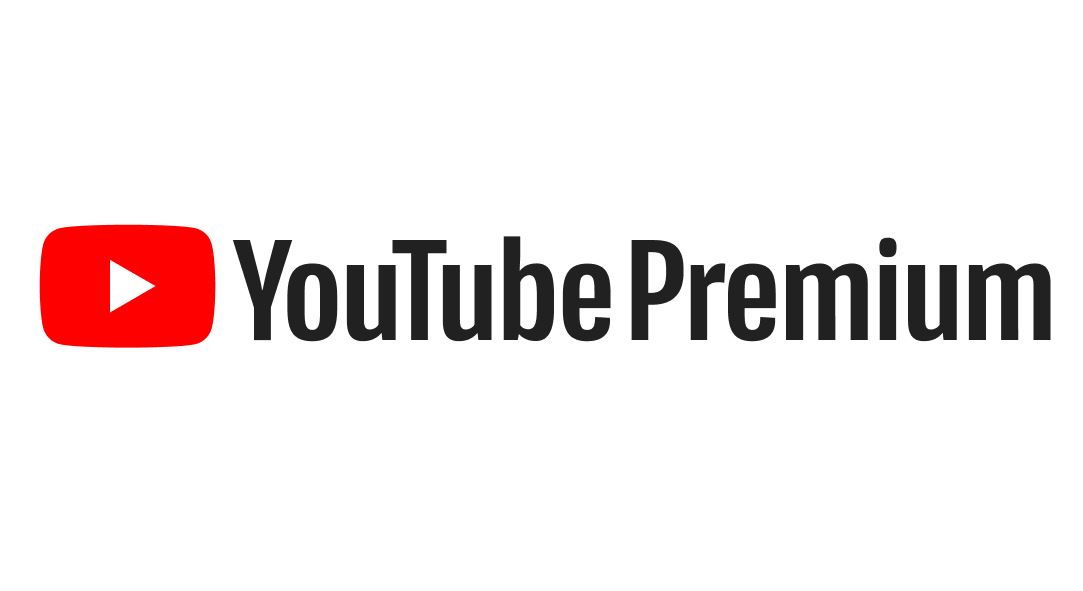Understanding Youtube Channel Monetization
Understanding YouTube Channel Monetization is critical for content creators looking to transform their passion into a long-term income stream. At its essence, YouTube Channel Monetization entails making money from the content you post on your channel. The YouTube Partner Program is the major way of monetization on YouTube, allowing creators to earn money from adverts that appear in their videos. To be eligible for this program, channels must meet certain criteria, such as having at least 1,000 subscribers and 4,000 view hours in the previous 12 months. Once approved, producers can begin earning money from a variety of ad forms, including pre-roll commercials, mid-roll ads, and display ads. However, monetization does not end there. Creators can increase their earning potential by looking into different monetization opportunities including channel memberships, retail shelves, Super Chat, and YouTube Premium fees. Furthermore, understanding audience engagement and customizing content to increase watch duration and viewer retention can have a major impact on ad revenue. Creators must also be aware of YouTube’s monetization standards and community guidelines in order to comply and prevent any demonetization difficulties. Creators can unleash the full potential of their channels and develop a long-term career doing what they love by mastering the complexities of YouTube Channel Monetization and adopting successful strategy.
[adinserter block=”1″]
YouTube Monetization Requirements and Eligibility Criteria
Qualifying for YouTube Monetization is an important milestone for prospective producers who want to monetize their material and create cash through their channels. YouTube’s eligibility rules are aimed to ensure that channels meet specific standards before earning money through adverts. One of the major requirements is to accumulate 4,000 watch hours in the previous 12 months, demonstrating sustained watching and involvement. Furthermore, channels must have at least 1,000 subscribers to demonstrate a growing audience. Meeting these requirements shows YouTube that the channel is devoted to delivering high-quality material and has piqued the interest of its viewers. To attain and sustain these milestones, creators must prioritize the creation of interesting and meaningful content that resonates with their target audience. Building a loyal subscriber base and increasing viewer engagement through regular uploads, interactive features, and community participation can speed up the process of achieving monetization criteria. Furthermore, remaining current with YouTube’s standards and guidelines is critical to ensuring compliance and avoiding obstacles during the monetization process. Creators may monetize their passion and transform their YouTube channels into thriving companies by working tirelessly to meet these eligibility criteria and creating captivating material.
Exploring Different Methods to Monetize Your YouTube Channel
Exploring multiple ways to monetize your YouTube channel provides creators with numerous chances to diversify their revenue streams and maximize their earning potential. While ad revenue from the YouTube Partner Program is a key source of income, producers can diversify their monetization plans to include a variety of other sources. One common option is channel subscriptions, which require subscribers to pay a monthly price in exchange for special benefits such as badges, emoticons, and members-only content. Another great method is to use the merchandising shelf function to sell branded stuff immediately beneath videos, giving fans real ways to support their favorite producers. Additionally, producers can interact with their audience during live streams using Super Chat and Super Stickers, which allow viewers to make monetary donations in exchange for highlighted words or animated stickers. Furthermore, enrolling in the YouTube Premium revenue pool allows creators to get a portion of the subscription fees paid by Premium viewers who watch their content ad-free. Exploring affiliate marketing agreements, sponsored content collaborations, and crowdfunding platforms broadens authors’ monetization opportunities. Creators may establish long-term incomes and deeper ties with their YouTube fans by diversifying revenue streams and personalizing monetization tactics to their audience and content niche.
[adinserter block=”1″]
Maximizing Ad Revenue: Tips for Optimal Ad Placement and CPM
Maximizing ad revenue on YouTube requires intelligent ad placement and a grasp of the factors that influence CPM (Cost Per Mille), ensuring that artists make the most money possible from their video. Effective ad placement is critical for earning income while maintaining a positive viewer experience. Mid-roll adverts placed strategically across lengthier films can boost ad impressions and engagement while reducing viewer drop-off. Furthermore, experimenting with various ad formats, such as overlay advertisements, skippable video commercials, and display ads, can assist maximize revenue while responding to audience preferences. Furthermore, focusing on specialist content and targeting specific demographics can entice marketers to pay higher CPM rates for relevant consumers. Building a devoted subscriber base and encouraging audience engagement through regular uploads and community interaction can help boost CPM by improving watch time and viewer retention. Furthermore, remaining up to date on industry trends, ad market fluctuations, and YouTube’s ad restrictions is critical for developing effective ad revenue maximization methods. By applying these tips and constantly refining ad placement and content strategy, artists may maximize the revenue potential of their YouTube channels and generate long-term income from their material.
Beyond Ads: diversifying your revenue streams on YouTube
Diversifying revenue streams beyond adverts is a strategic method for YouTube artists to create a more strong and long-lasting income ecosystem. While ad revenue remains the principal source of income, researching alternate monetization options can give additional revenue streams and minimize reliance on fluctuating ad rates. One profitable option is channel memberships, which allow fans to subscribe to a creator’s channel in exchange for special advantages such as badges, emojis, and members-only content, generating a regular revenue stream. Using the merchandising shelf function, producers may sell branded products straight to their audience, entering into the lucrative world of e-commerce. Additionally, participating in sponsored content collaborations, affiliate marketing programs, and crowdfunding platforms allows artists to monetize their influence and material in a variety of ways. Live streaming tools like Super Chat and Super Stickers enable viewers to make monetary donations during streams, increasing revenue prospects. Furthermore, researching premium membership models such as YouTube Premium can provide creators with a portion of the subscription revenues from ad-free viewing, broadening revenue streams beyond standard ad monetization. Creators may develop sustainable income streams and foster deeper connections with their YouTube following by deliberately diversifying revenue streams and personalizing monetization tactics to their audience and content niche.
[adinserter block=”1″]
Leveraging YouTube’s Partner Program: Benefits and Drawbacks
Leveraging YouTube’s Partner Program can be a game changer for content creators, providing a variety of benefits while also posing some risks to avoid. One of the key advantages is the ability to monetize content with adverts, which provides producers with a consistent source of cash depending on ad impressions and viewer interaction. Furthermore, access to comprehensive analytics and audience insights allows producers to better understand their target audience and personalize content to their preferences, resulting in stronger relationships and increased engagement levels. Furthermore, participation in the Partner Program grants access to other monetization tools such as channel memberships, Super Chat, and retail shelves, providing creators with revenue streams beyond typical ad monetization. However, there are certain drawbacks to consider, such as satisfying the eligibility requirements and following YouTube’s monetization regulations and community guidelines to avoid any demonetization concerns. Fluctuating ad rates and algorithm modifications can also have an influence on revenue stability, requiring producers to be agile and diversify their monetization techniques. Furthermore, relying entirely on ad revenue may limit income possibilities, prompting the investigation of alternate revenue streams in order to establish a more stable monetization environment. Creators can realize the full potential of YouTube’s Partner Program and generate long-term income from their work by recognizing its benefits and drawbacks and using successful tactics.
The Impact of Audience Engagement on Monetization Efforts
Audience engagement is critical to increasing revenue efforts on sites such as YouTube. Beyond simply providing content, establishing a strong relationship with viewers fosters a dedicated fan base that is more willing to support producers via multiple monetization methods. High levels of engagement, as measured by metrics such as likes, comments, and shares, communicate to algorithms that the material is useful and interesting, thereby increasing visibility and reach. Furthermore, engaged audiences tend to have longer viewing times, which boosts ad income by increasing ad impressions and CPM rates. Furthermore, interactive features like polls, Q&A sessions, and community posts foster a stronger connection between creators and viewers, promoting involvement and establishing community relationships. Furthermore, engaged audiences are more likely to use monetization tools like channel memberships, merchandise purchases, and direct contributions during live streams, providing creators with revenue streams other than ad revenue. Creators may improve their monetization efforts by focusing audience engagement and developing meaningful connections, as well as build a durable and thriving presence on platforms such as YouTube.
[adinserter block=”1″]
Understanding YouTube’s Monetization Policies and Community Guidelines
Understanding YouTube’s monetization policies and community guidelines is critical for artists who want to commercialize their content while maintaining a positive presence on the network. These policies define the norms and conditions that authors must meet in order to be eligible for monetization and avoid penalties like demonetization or channel suspension. Understanding the complexities of these policies requires familiarizing oneself with requirements for content acceptability, copyright infringement, advertiser-friendly content, and community standards. Creators must ensure that their work adheres to these criteria in order to retain monetization eligibility and build a safe and courteous environment for viewers. Regular updates and modifications to YouTube’s policies involve remaining updated and adjusting content strategies accordingly. Furthermore, encouraging open contact with viewers and actively policing comments and interactions can help to promote a healthy community environment and reduce the likelihood of policy breaches. Creators may develop a long-term presence on YouTube while increasing their financial potential by carefully managing the platform’s monetization restrictions and community guidelines.
Resources to Track and Analyze Monetization Performance
Tracking and analyzing YouTube monetization performance is critical for producers trying to optimize income sources and maximize earning potential. Fortunately, there are a number of tools and resources accessible to help with this attempt. YouTube Analytics is a comprehensive tool offered by the platform that provides insights into key variables such as view time, revenue, ad performance, and audience demographics. Creators can use this data to spot trends, evaluate audience behavior, and make informed content strategy and monetization decisions. Third-party analytics tools, such as Google Analytics and Social Blade, offer extra layers of knowledge, allowing creators to look deeper into performance indicators and compare their channel’s success to competitors. Furthermore, affiliate marketing networks like Amazon Associates and ShareASale include tracking tools to analyze the efficacy of affiliate links and fees collected from referral sales. By properly utilizing these tools and resources, creators may acquire useful insights into their monetization performance, discover areas for development, and optimize their strategy for long-term revenue growth on YouTube.
[adinserter block=”1″]
Learn from Top YouTube Creators
Monetization success stories from top YouTube artists provide vital inspiration and advice for aspiring content creators seeking financial success on the site. These success stories demonstrate the various roads to revenue and the methods and tactics that have propelled innovators to the top of their respective areas. From lifestyle vloggers to gaming fans, beauty gurus to educational channels, analyzing successful artists’ journeys can provide a wealth of knowledge. By comparing their approaches to content development, audience engagement, and monetization techniques, prospective producers can learn significant lessons to apply to their own channels. Whether it’s using several revenue streams, growing a passionate fan base, or perfecting the art of storytelling, these success stories show that there are numerous paths to success on YouTube. They also emphasize the need of tenacity, originality, and sincerity in developing a successful career as a content creator. By learning from the experiences of successful YouTube creators, aspiring creators can speed up their own growth and boost their chances of financial success on the site.


